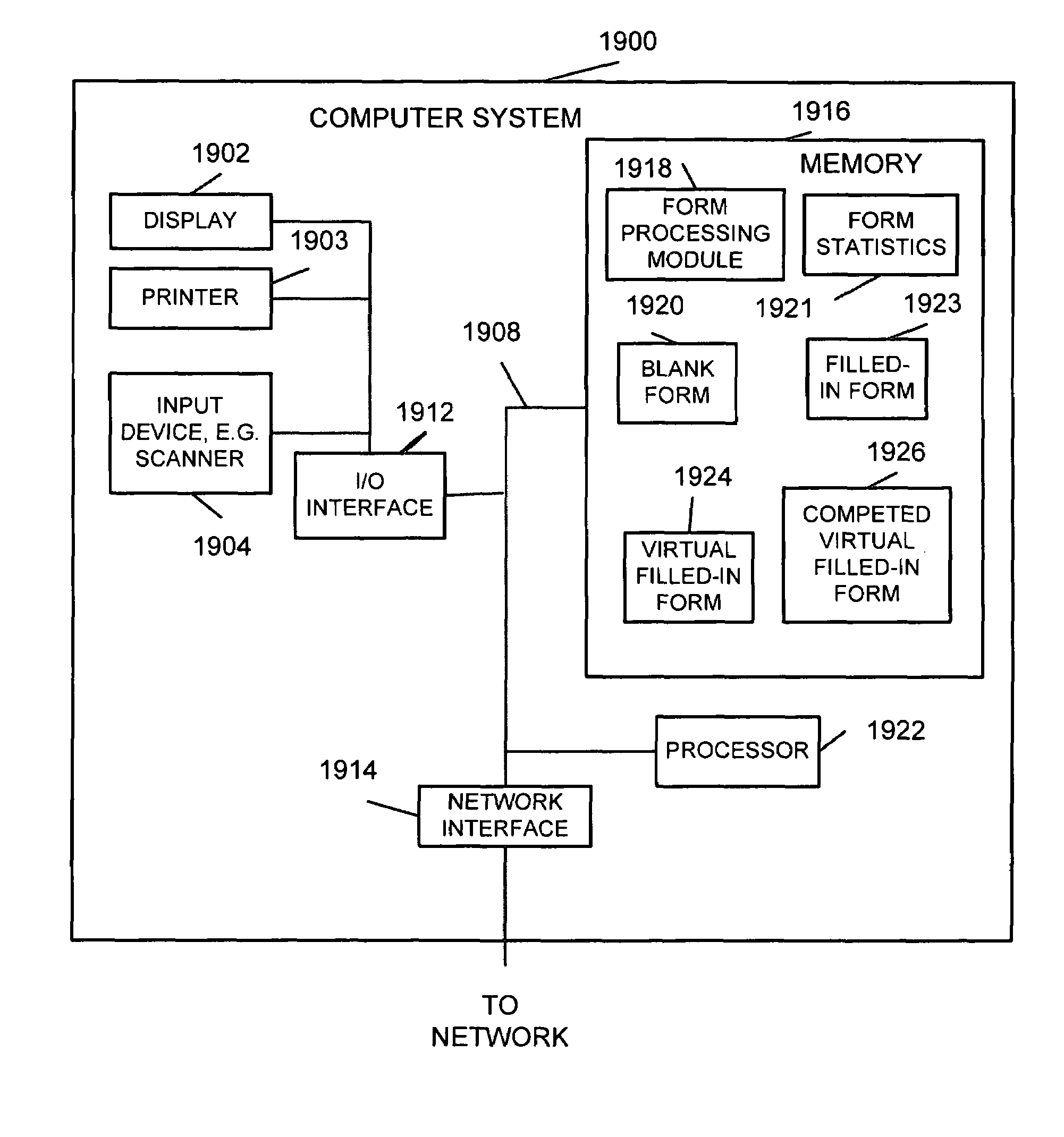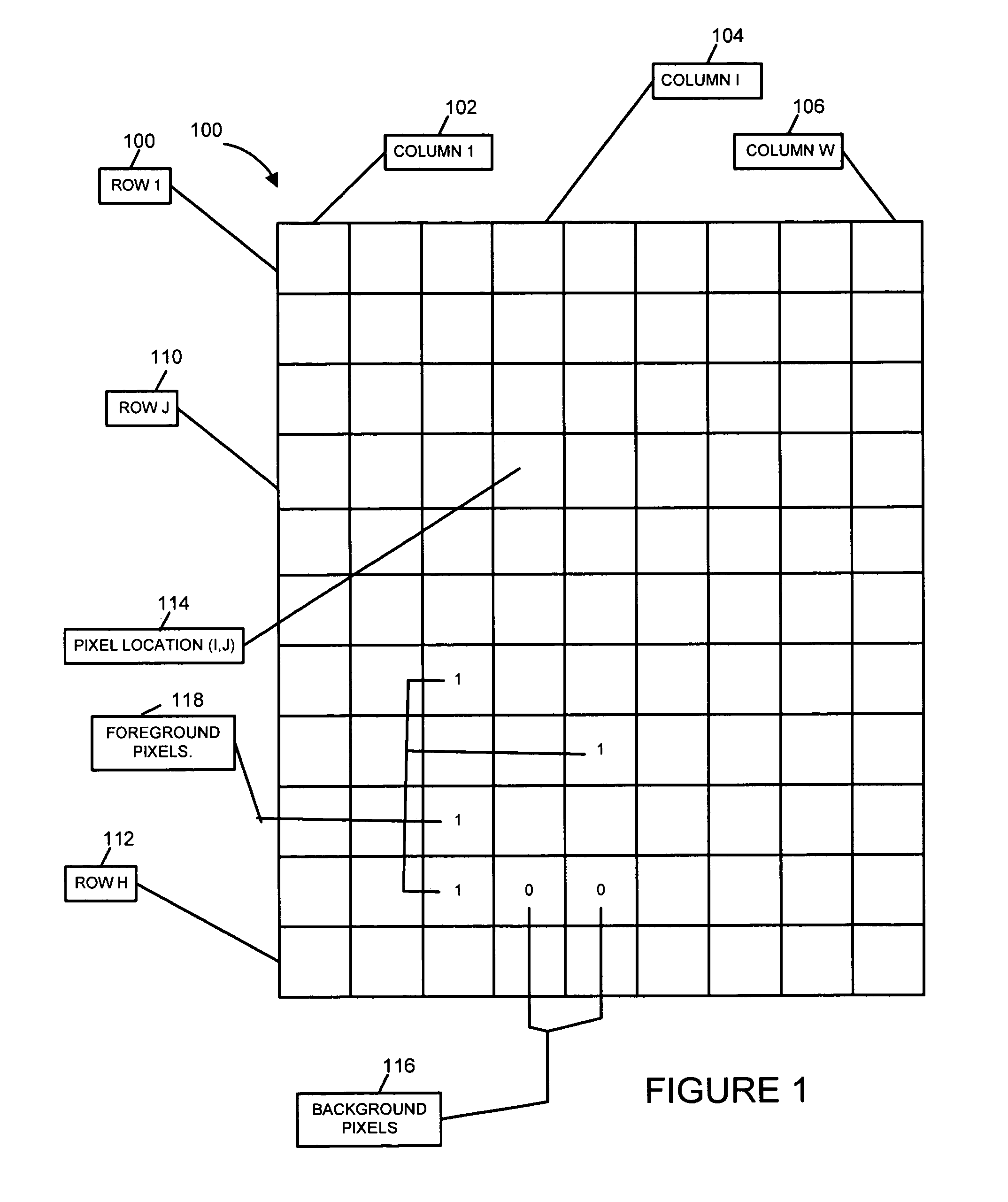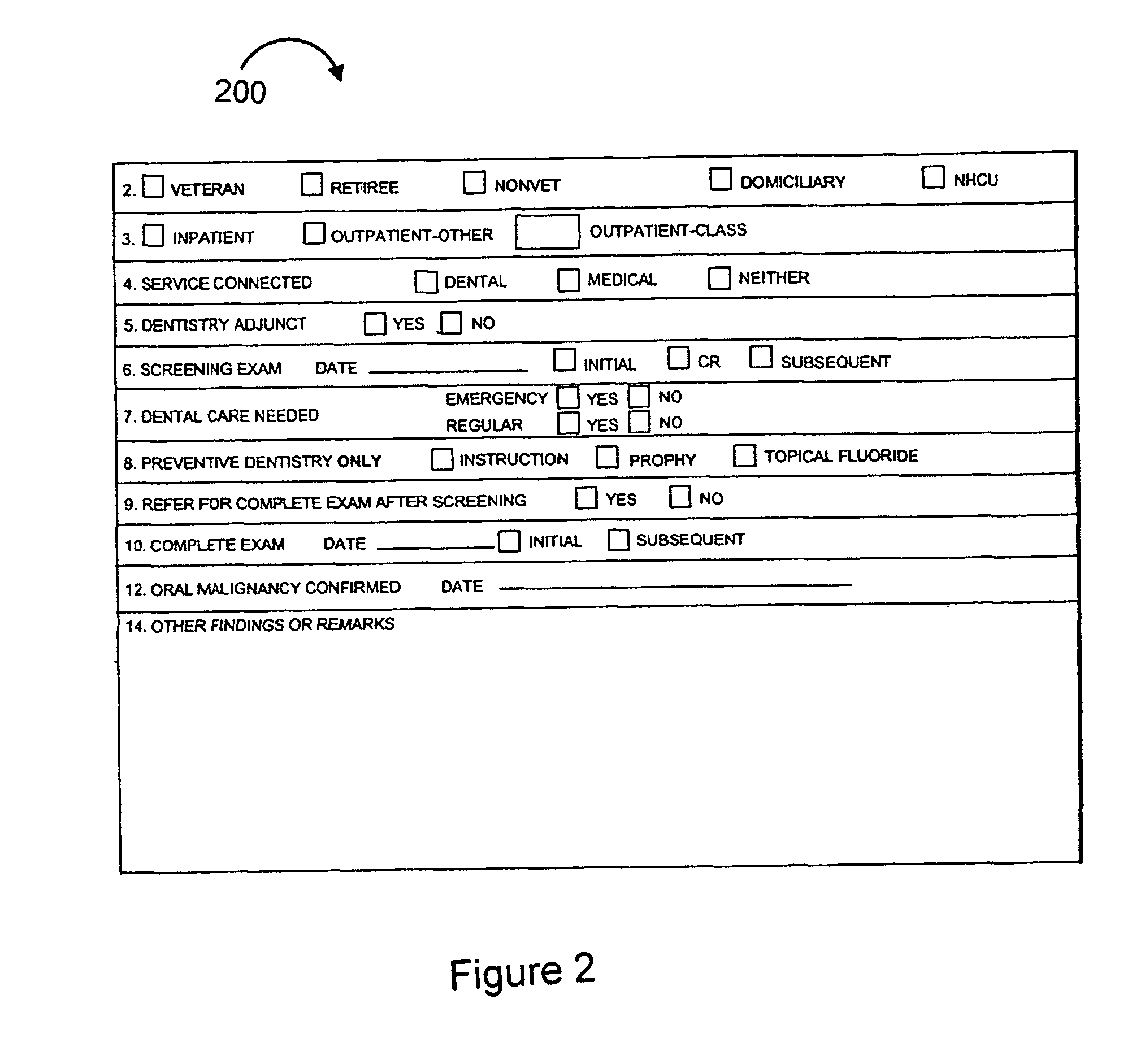Method and apparatus for recognizing a digitized form, extracting information from a filled-in form, and generating a corrected filled-in form
a technology of digitized forms and filling forms, applied in the field of automatic processing of forms, can solve the problems of affecting the processing speed of digital forms, affecting the accuracy of digital forms, etc., and achieve the effect of processing very quickly
- Summary
- Abstract
- Description
- Claims
- Application Information
AI Technical Summary
Benefits of technology
Problems solved by technology
Method used
Image
Examples
Embodiment Construction
[0055]FIG. 4 depicts an exemplary embodiment of the invention. The process starts in step 400.
[0056]Step 401 represents the specification of parameters whose values do not change throughout the process. These can be fixed as constants in the computer program that governs the process or can be read from a configuration file or stored memory at the start of the process. In the preferred embodiment these constants include ASP_TOL, a threshold for aspect ratios; IPULL and OUTPULL, flexibility factors used in the process of comparing histograms; WEIGHT, a base weight used in calculating errors; TYPE1_THRESHOLD and TYPE2_THRESHOLD, error thresholds; HIST_MASS, the common mass of each of the histograms dealt with in the process; MIN_SUM, a large constant used to initialize variables whose minimal value is being calculated; HIST_THRESH, a threshold for histogram errors; NBHD_RAD, the largest offset displacement allowed for local translation operators; IT_MAX, the number of iteration steps u...
PUM
 Login to View More
Login to View More Abstract
Description
Claims
Application Information
 Login to View More
Login to View More - R&D
- Intellectual Property
- Life Sciences
- Materials
- Tech Scout
- Unparalleled Data Quality
- Higher Quality Content
- 60% Fewer Hallucinations
Browse by: Latest US Patents, China's latest patents, Technical Efficacy Thesaurus, Application Domain, Technology Topic, Popular Technical Reports.
© 2025 PatSnap. All rights reserved.Legal|Privacy policy|Modern Slavery Act Transparency Statement|Sitemap|About US| Contact US: help@patsnap.com



